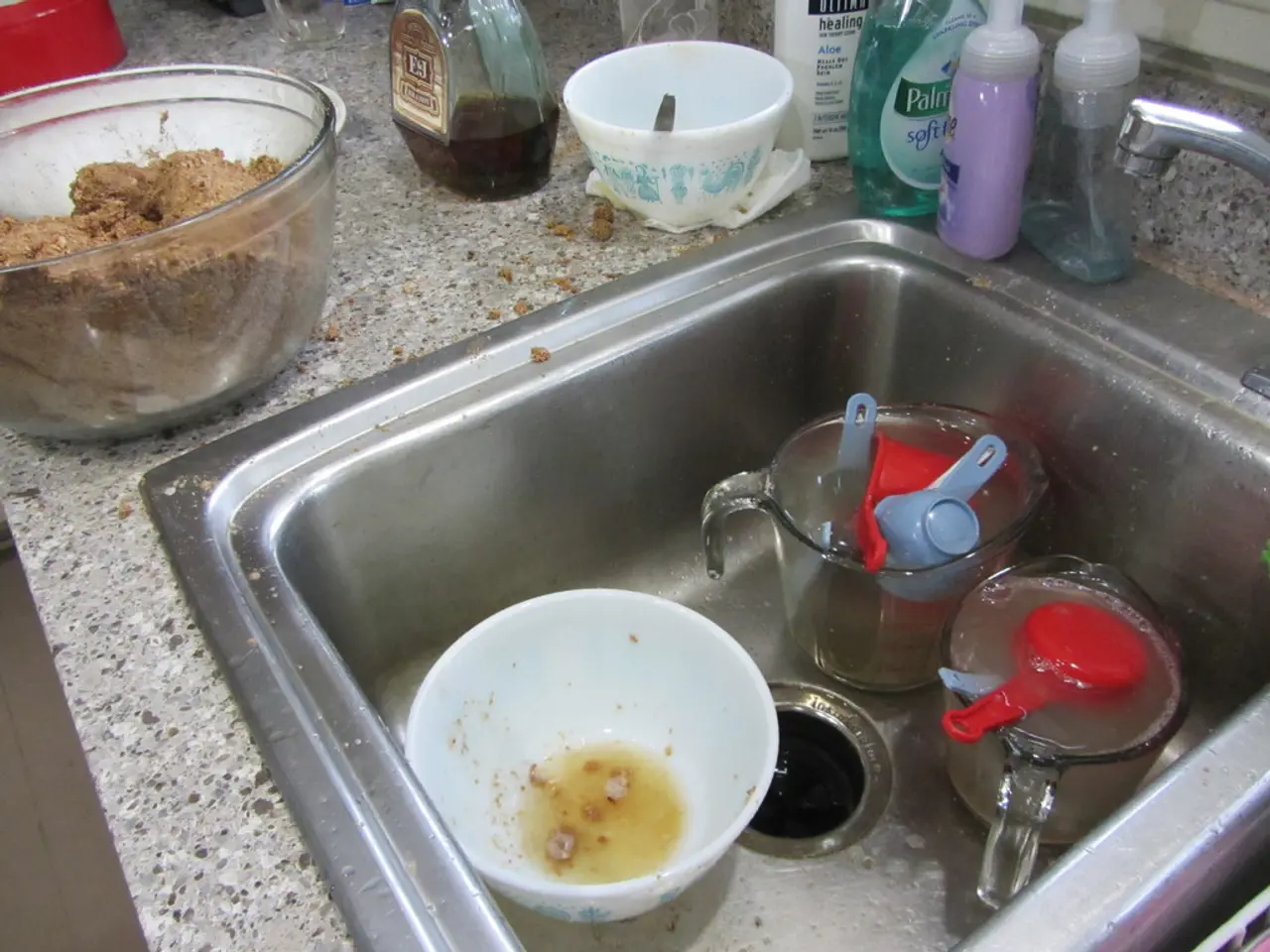Avoid Unnecessary Toxicity: Steer Clear of Disinfectant Wipes for These 5 Cleaning Tasks
In a world where disinfectant wipes have become a staple in many households, it's essential to remember that not all surfaces are created equal. Dr. Sandip Sachar, a NYC-based dentist, and Scott Schrader, a professional cleaner at CottageCare, advise against using disinfectant wipes on certain areas due to potential damage or ineffectiveness. Here are five specific areas where alternative cleaning methods are recommended:
1. Food Preparation Surfaces
For food prep surfaces, use warm, soapy water with a cleaning product safe for the specific surface material (e.g., wood, ceramic, stone, stainless steel). After cleaning, sanitize with an appropriate sanitizer like a diluted bleach solution (1 tablespoon bleach per gallon of water) or a commercial sanitizer labeled for food surfaces. For a natural alternative, a 1:1 mix of distilled white vinegar and water can be used as a gentle but effective cleaner for many food prep surfaces [1][3][4].
2. Electronics
Avoid using disinfectant wipes on electronics as they can leave residue or cause moisture damage in sensitive areas. Instead, use a dry microfiber cloth or a cloth slightly dampened with water or 70% isopropyl alcohol, applied carefully without saturating the device.
3. Painted Furniture and Walls
Disinfectant wipes may cause shiny patches or streaks on painted surfaces. Instead, dust with a dry microfiber cloth for furniture or use a dry Swiffer mop for walls to reach high areas without risking damage to the paint [2].
4. Upholstery
Disinfectant wipes do not disinfect porous fabrics effectively and may cause moisture damage such as staining or mildew. Use fabric-safe cleaners or upholstery steam cleaning methods. Commercial fabric disinfectant sprays (e.g., Lysol Fabric Disinfectant Spray) or fabric refreshers (e.g., Attitude Fabric Refresher) can be used after spot testing. For a chemical-free method, professional-grade upholstery steam cleaners like the Bissell Little Green steamer are recommended—though some delicate fabrics cannot be steamed [2].
5. Retainers and Dentures
Disinfectant wipes are not suitable for dental appliances because they can damage the material and are not intended for medical device sanitation. Instead, clean retainers and dentures by brushing gently with a denture brush and mild soap or toothpaste and soaking them in products designed for dental appliance cleaning, such as denture cleansers or antibacterial mouthwashes, following manufacturer instructions.
These alternative methods ensure protection of delicate surfaces and effective sanitation without the risks posed by disinfectant wipes [1][2][3][4]. It's also important to note that the chemicals in disinfectant wipes are not safe for internal use and can irritate the sensitive tissues in the mouth.
In addition to these recommendations, Sponge cloths, which are plant-based, are an eco-friendly, hygienic alternative to traditional sponges and paper towels. A 12% concentration of food-grade hydrogen peroxide is 4X more concentrated than standard hydrogen peroxide and is perfect for household disinfecting. The Environmental Working Group (EWG) has certified Attitude products as non-toxic, making them a safer choice for many cleaning tasks.
By opting for these alternative cleaning methods, you can maintain a clean and safe home while minimizing potential harm to your surfaces and health.
In the realm of home-and-garden maintenance, it's crucial to consider the implications of certain cleaning methods on various surfaces. For instance, when dealing with upholstery, switching from disinfectant wipes to fabric-safe cleaners or upholstery steam cleaning methods can prevent moisture damage and ineffective disinfection.
In terms of lifestyle considerations, using eco-friendly alternatives like Sponge cloths can contribute to a cleaner and safer home, while minimizing potential harm to surfaces and health.





